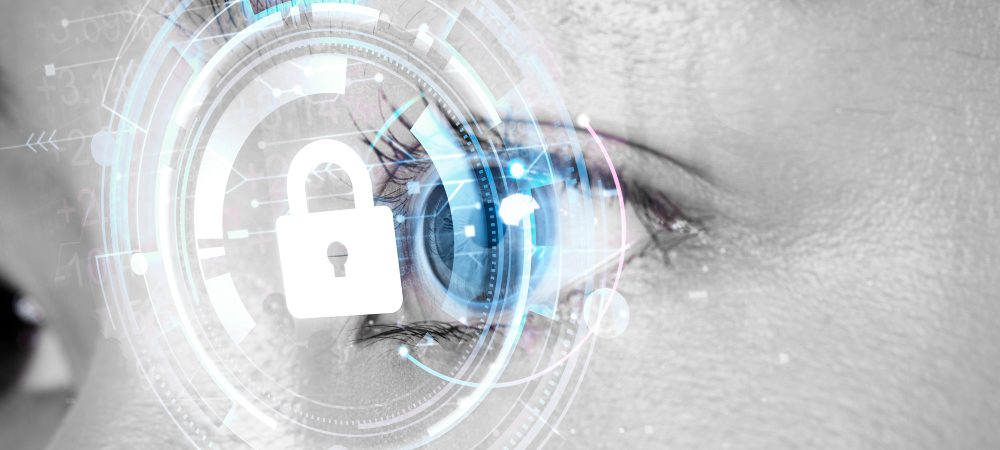Annually, the consumer loses billions to financial scams, but a technological revolution is turning everything upside down. By 2025 biometric authentication will provide security to more than $3 trillion of international mobile payments and that is a huge transformation and transition to the original passwords based systems. It is not just a security upgrade. It is a radical change in the way we keep our most confidential financial details.
Statistics make an interesting tale. By March 2025, 87 percent of banks around the world are experiencing biometric authentication, whereas 79 percent of financial institutions have already implemented or are in an implementation phase of implementing the solutions by 2026. The extensive use has a logical basis a mere fact that passwords on their own are no longer enough to combat advanced cyber threats.
Why is Biometric Security in Fintech a Revolution?
Old forms of authentication use something you know (passwords) or something you have (phones in the case of two-factor authentication). The biometric security in fintech provides something not inherent in the previous fintech: what you are. Your finger, your face, your voice, even the way you behave get transformed to your digital keys.
The strategy will invite unmatched security as the biological characteristics can hardly be duplicated or stolen. Your biometric data cannot be accessed by the hackers unlike cracking passwords or intercepting tokens. This is one of the values being understood by financial institutions, with 64 percent of world banks having already implemented a kind of biometric authentication.
Unique physical characteristics are analyzed by sophisticated algorithms used in this technology. Sophisticated systems check your biometric data for matches when you put your finger on a scanner or when you look into a camera. It occurs within milliseconds which brings convenience as well as security that the traditional methods could not offer.
Modern Forms of Biometric Verification in Financial Services
The groundwork of Fingerprint Recognition: The Foundation
Fingerprint scanning has been by far the most popular biometric technique as it is used in 57 percent of the banks across the world. It has become popular on the basis of its reliability and familiarity among users. Fingerprint sensors have become readily available to millions of people because most smartphones presently come equipped with this technology.
Even such large financial applications as PayPal, Cash App, and Robinhood already utilize fingerprint scans as a means of secure transactions. To approve payments, users will not have to remember long passwords or wait on SMS codes, as they can authorize payments on the spot.
The Rising Norm of Face Recognition
Facial recognition technology has seen great momentum where 32 percent of banks have adopted the solution. State-of-the-art AI algorithms recognize features on the face to confirm the identity, and this contactless form of verification found its value during the pandemic.
Financial institutions such as HSBC and chase have adopted facial recognition in establishing password-free experiences to their customers. The technology uses liveness detection as a defense against videos and photo-based spoofing attacks to achieve true user presence.
Voice Authentication: Speaking is our Security
Voice recognition uses more than 100 distinctive features of the voice to confirm identity. The voice ID program that HSBC implemented and currently operates proves the effectiveness of the technology, with over 2.8 million customers served and over 249 million in tried fraud since 2016 stopped.
The approach is especially when banking services are done by phone. Customers do not need to know an account number or be interrupted with complicated security questions because they can authenticate just via speaking.
Behavioral Biometrics: The Transparent Screen
Probably the most creative advancement is behavioral biometrics, tracking user-device interactions. Those systems evaluate the ways of typing, mouse operations, pushing of the touch screen, and maneuvering styles to generate distinctive digital fingerprints.
One of the European banks already lowered payment fraud by 52 percent with the help of dynamic behavioral profiling to show how this method works. Behavioral patterns will also authenticate users continually during their sessions, unlike in the case of static biometrics.
Its Life Victories, Changing Banking
Biometric implementations are yielding striking results across financial institutions all over the world. The mobile banking app that Bank of America has developed has many biometric options that have led to a 52 percent decline in instances of fraud and 23 percent consumer usage in mobile banking.
At the Singapore DBS bank, the iris scanning at ATMs does not require the use of the physical card any more. This innovation reduced the time of transaction by 42 percent and customer satisfaction ratings by 31 percent.
These advancements indicate how biometric security can be useful in improving security and the user experience.
Very successful implementations are presented in the UK fintech sector. Revolut provides a method of account access through fingerprint and facial usage, benefiting millions of customers across the globe. Monzo deploys mobile apps that employ biometric authentication; the lack of friction associated with technology implementation has helped the institution to gain customer trust.
Market development and financial reflection
The biometric authentication world is blowing up. The digital identification solutions market is estimated at 34.5 billion in 2023, with the industry analysts expecting the worldwide biometric system industry to attain an estimated mark of 83 billion in the year 2027.
One such emerging area is passwordless authentication, developed with the help of biometric technology, which was estimated at more than 15 billion in 2022 and is already expected to surpass 53 billion by 2030. This is due to the fact that this growth can be attributed to the growing awareness that conventional approaches to security do not match current threats.
Biometric ATM is a sector on its own, with industry revenue expected to rise in value to reach a high of $46.7 billion in 2032 due to widespread market adoption of this technology in various financial touchpoints.
Extras That Are More Than Security
Increased user experience
On average, biometric authentication is used to save 53 percent of the time of traditional authentication. Customers on biometric systems complain about 37 percent less locked accounts and password reset pleas, which leads to a much better banking experience.
This convenience factor pushes the adoption. Surveys as of recent have shown that 85% of banking clients feel okay with the application of biometric authentication on their financial matters and a 92 percent sample size were recorded with more ease compared to the use of passwords in banking.
Fraud Excellence
In comparison to the traditional forms of authentication, biometric systems yield an accuracy of up to 99.97 percent in facial recognition. This specificity eliminates the number of successful frauds and identity theft cases down the drain.
The technology is particularly useful in containing account takeover attacks, cutting down its frequency by 41 per cent as reported by recent industry reports. Even greater levels of protection are enjoyed through multi-modal biometrics systems, which incorporate many authentication factors.
Regulatory Compliance Assistant
There are growing compliance demands within financial institutions. Biometric authentication is appropriate in addressing regulations such as PSD2, GDPR and AML regulations, as they have strong audit trails and identity verifications.
Details of authentication efforts are kept in detail logs with the technology thereby aiding in report activities and fraud investigation. This reporting is helpful in regulatory inspection and litigation.
Future Trends
Multimodal Authentication Systems
Major financial institutions are leaving behind single biometric factors. Facial recognition, voice recognition and behavioral biometrics have been integrated into the security systems of banks such as DBS and HSBC and are now used to develop multi-layered security solutions.
Such end-to-end systems eliminate synthetics ID fraud by 63 percent, with still easy-to-use customer experiences. Unauthorized readings are impossible as a result of the combination of several biometric factors.
Contactless Solutions
The pandemic fast tracked the need of contactless authentication. Facial recognition ATMs and palm-vein identification ATMs are expected to increase by 300 percent by 2026 and will have excellent security without the need to carry a physical card.
The financial organizations are adopting these technologies to offer clean, convenient banking practices, which clients are growing to demand.
AI-Powered Enhancements
Biometrics is undergoing a revolution through artificial intelligence. Machine learning algorithms constantly get more accurate and are prepared to adapt to the changing user patterns such as age or appearance changes.
Machine learning systems will be able to spot elaborate spoofing processes and offer pre-emption of fraud in real-time. The advances help to make biometric authentication more reliable and safe.
Dealing with Challenges of Implementation
Data Protection and Privacy
Financial organizations need to find the right balance between security and privacy. The adoption of the biometrics systems demands a strong data protection procedures and clear privacy agreements.
Most organizations deal with this issue by holding the biometric data as encrypted template is form, not as images or recordings. This method gives the benefits of security, and the risk of privacy is low minimally.
Technology Integration
Effective execution of biometrics entails painstaking integration with the pre-existing systems. Financial institutions have to consider compatibility among various platforms and devices as well as the uniformity of user experiences.
Adequate infrastructure investment and employee training is the key to successful deployments. A well thought-out organization is likely to produce more effective functionalities and acceptance among the users.
The Future: Where is Biometric Security Going?
Even more advanced biometric applications are ahead. New technologies have been introduced such as authentication with the use of a heartbeat through an ECG, emotional recognition applications and quantum-resistant encryptions of biometrics.
Financial institutions are experimenting on blockchain-enabled biometric identity that would preserve privacy without compromising security.
These breakthroughs will also boost the relationship between biometric security and money safety even further.
Biometrics authentication is capable of delivering flexible, strong security that ensures the financial services stay safe as cyber threats evolve. Most modern fintech infrastructure systems require the use of the technology both because of its convenience and protection.
Passwords to biometrics security is not just an upgraded technology. It represents a paradigm change to safer and convenient financial services to safeguard the customers as well as to improve their experiences in using the banking services. This development will keep influencing the financial sector in the years to come.



